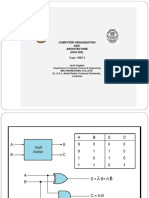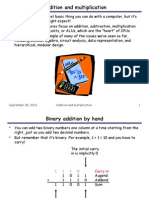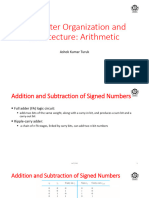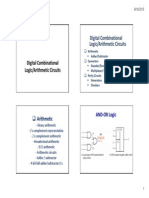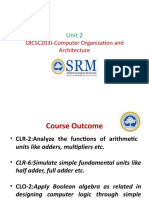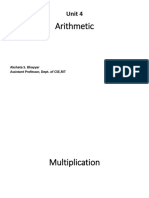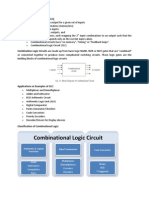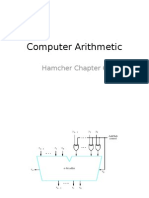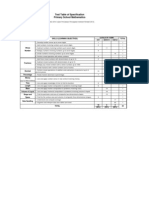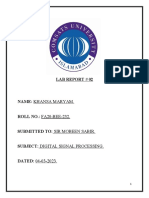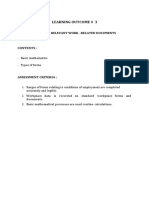0% found this document useful (0 votes)
27 views43 pagesFast Arithmetic Operations in Computers
The document discusses the arithmetic unit in computer organization, focusing on addition, subtraction, and multiplication operations. It explains the logic circuits involved, including full adders and carry-lookahead adders, as well as Booth's algorithm for signed multiplication. The performance implications of these arithmetic operations on processor speed are also highlighted.
Uploaded by
hajeera.nkCopyright
© © All Rights Reserved
We take content rights seriously. If you suspect this is your content, claim it here.
Available Formats
Download as PPTX, PDF, TXT or read online on Scribd
0% found this document useful (0 votes)
27 views43 pagesFast Arithmetic Operations in Computers
The document discusses the arithmetic unit in computer organization, focusing on addition, subtraction, and multiplication operations. It explains the logic circuits involved, including full adders and carry-lookahead adders, as well as Booth's algorithm for signed multiplication. The performance implications of these arithmetic operations on processor speed are also highlighted.
Uploaded by
hajeera.nkCopyright
© © All Rights Reserved
We take content rights seriously. If you suspect this is your content, claim it here.
Available Formats
Download as PPTX, PDF, TXT or read online on Scribd
/ 43















